Growth ******* is an experimental business strategy focused on achieving exponential growth in a short time frame.
Marketing teams—especially those working on a tight budget—use growth-******* techniques to rapidly generate brand awareness and grow their customer base.
Today we’ll explain how growth ******* works and review examples of growth hacks that have helped marketers achieve fast, low-cost growth. We’ll also provide a simple growth-******* framework to get you started.
What Is Growth *******?
Growth ******* focuses on growth above all else. To that end, growth hackers constantly ideate and run experiments to bring in new customers. When an experiment results in positive growth, they scale it and iterate some more.
Startup advisor and entrepreneur Sean Ellis, who founded the online GrowthHackers community, coined the term in 2010. Ellis defines a growth hacker as “a person whose true north is growth,” regardless of their title or job description.
But growth ******* isn’t just an abstract state of mind. It refers to specific marketing techniques and channels that target fast, low-cost growth. This is why many now associate the term with early-stage startups chasing rapid expansion on small budgets.
Growth Hackers Constantly Experiment and Iterate
Trying out new tactics and approaches is key to growth *******.
Usually, this means running a number of small experiments simultaneously. Once you know which tactics work best on a small scale, you can integrate them into your long-term marketing strategy.
Here’s an example:
A new e-commerce business needs to generate leads and build early sales momentum.
The marketing team knows online ads generate results—but they aren’t sure which tone of voice to use in their ad copy. So, they test two different versions and compare the results.
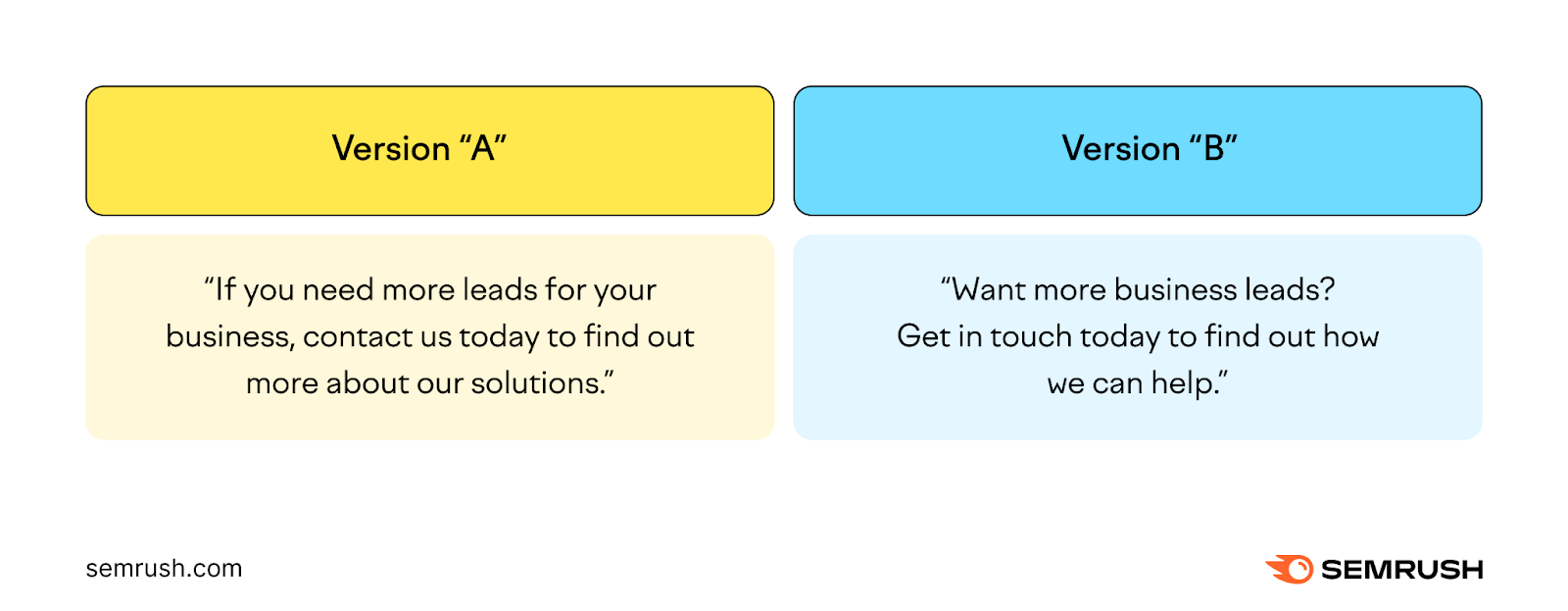
The version with a more direct and informal tone (Version “B”) drives the most website traffic and conversions, so it’s rolled out to a wider audience.
This process is called A/B testing or split testing, and it’s a great way to maximize growth on a small budget. The business can invest in ads that do a better job of resonating with customers—and perhaps use the winning copy as a variant in a follow-up test.
The Difference Between Growth ******* and Digital Marketing
Growth ******* and digital marketing share the goal of business growth but differ in their approach and emphasis.
Digital marketing is any use of digital media to promote a product or service.
Growth ******* is a subset of digital marketing. It focuses less on traditional tactics that are proven to work and more on finding new pathways to exponential growth. These “growth hacks” are often creative and outside the box, though they’re generally driven by data and ruthless experimentation.
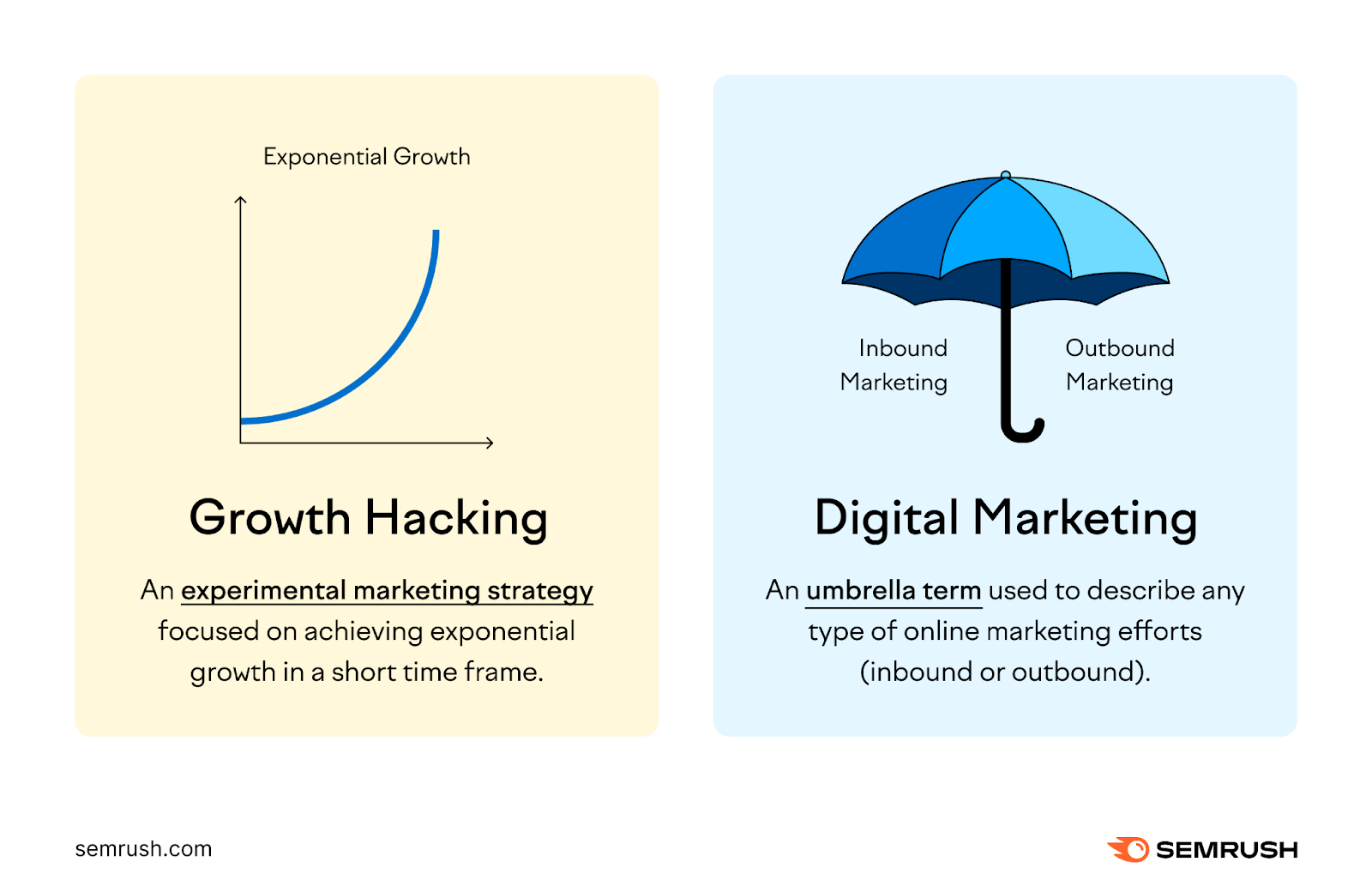
Not all digital marketing techniques are useful to growth hackers.
For example, SEO is a form of digital marketing that rarely leads to explosive growth. Since it can take months to rank organically for target keywords, SEO is better for achieving sustainable, long-term results.
But some digital tactics do help with growth.
Your business might run a series of short marketing campaigns with influencers in different fields to see which drives the most traffic.
For example, a cycling brand might A/B test a campaign with a mountain-biking influencer (A) and a more general outdoor-sports account (B). The variant that drives the best short-term results would then be scaled, tested against a third variant, or both.
How Growth ******* Can Help Your Business
Here are four reasons to make growth ******* a cornerstone of your marketing strategy:
- Cost-effective expansion:Testing creative tactics can lead to significant growth with minimal investment.
- Data-driven decision making: Growth ******* involves lots of trial and error. Data from split tests and other experiments indicate what works and what doesn’t. This can help you make better-informed marketing decisions that lead to greater return on investment (ROI).
- Minimal disruption: The “start small and iterate” nature of growth ******* lends itself to lean teams. If you can’t sacrifice a ton of resources, you may be able to start with only one or two employees on your growth-******* team.
- Increased responsiveness: When you scale successful marketing strategies fast, you can adapt to changing circumstances and markets more easily. The more growth ******* you do, the better prepared you’ll be.
These benefits make growth ******* particularly valuable to certain businesses.
For example, startups often have limited resources but still need to grow and make a name for themselves. Growth-******* techniques can help them gain visibility quickly without a significant investment.
Getting Started: Our Growth ******* Framework
Growth *******, by definition, involves a lot of trial and error. And every business’s growth-******* process is unique.
But there are steps that all brands must go through when generating, testing, and implementing ideas for rapid growth.
Here’s a simple framework you can use to start ******* growth.

1. Define Your Objectives
Outline your growth objectives first.
Be precise about the type of growth you want.
For example, you could aim to increase newsletter sign-ups, boost website traffic, or gain more active users.
Goals give you a compass for your growth-******* efforts. They’ll help you focus your strategies and measure success.
Once you know what you want to achieve, you can consider:
- How you’ll get there
- Which metrics you’ll need to gauge effectiveness
The next step is to generate some ideas.
2. Generate Ideas
Gather your team (a dedicated growth team, if resources allow) for a brainstorming session to generate some ideas for growth hacks.
If you can, involve people with different specialties (e.g., sales, marketing, product development, etc.) to tap into various creative perspectives.
You should hold it in a relaxed environment, so that everyone feels comfortable sharing their ideas, no matter how unconventional. And encourage attendees to build on each other’s suggestions. Collaboration can turn a passing thought into a fully formed concept.
You can also get inspiration from past marketing successes. Consider anything you’ve done so far that resonated with your target audience. Then, adapt those concepts for fast growth.
How might this look in practice?
Say you ran a small competition that resonated with email subscribers. You could run another with a bigger prize and promote it using your social media accounts and online ads.
This way, you’re using a tactic that you know works for your audience but expanding its reach to amplify your returns.
3. Choose Your KPIs
Pick key performance indicators (KPIs) that align with your growth objectives. These are the metrics you’ll use to evaluate your progress.
For instance, if you want to grow your email list, your metrics could be new sign-ups and unsubscribe rate.
Now get more specific.
What must happen to those metrics for your growth **** to succeed?
You might aim to gain 500 new sign-ups and reduce your unsubscribe rate to 0.25%. Now you have an endpoint and something quantifiable to measure.
Is your sole objective to gain new users? You might track deals closed or the number of people who go through your onboarding process.
Focused on growing brand awareness? A more appropriate metric might be first-time website visits.
4. Build and Execute Your Campaign
Translate your ideas into tangible actions and create the necessary assets to bring your plan to life.
You can break this part into three steps:
- Build the user journey: Define the sequence of events or steps your audience will follow as they engage with your growth-******* campaign (e.g., an email automation sequence, competition entry process, or series of landing pages).
- Allocate your resources: Specify the budget, time, and talent you need to implement your growth-******* strategy (e.g., assigning tasks, sourcing tools and materials, or outsourcing work).
- Create your assets: Build the content necessary to grab your target audience’s attention and move users through your intended user journey (e.g., craft emails, write your competition terms, or design your landing pages).
Now activate, send, or publish your campaign and wait for the results.
5. Analyze the Results
Once your campaign is active, track its performance closely. Analyze any data you can collect to gauge how well each tactic performs against your predefined KPIs and metrics.
Your chosen tactic will determine the best place to look for this data.
If you’re running a social media campaign, check your social platforms’ analytics tools. If it’s an email campaign, look to your email marketing software. Google Analytics is likely your best resource for tracking your own website’s metrics.
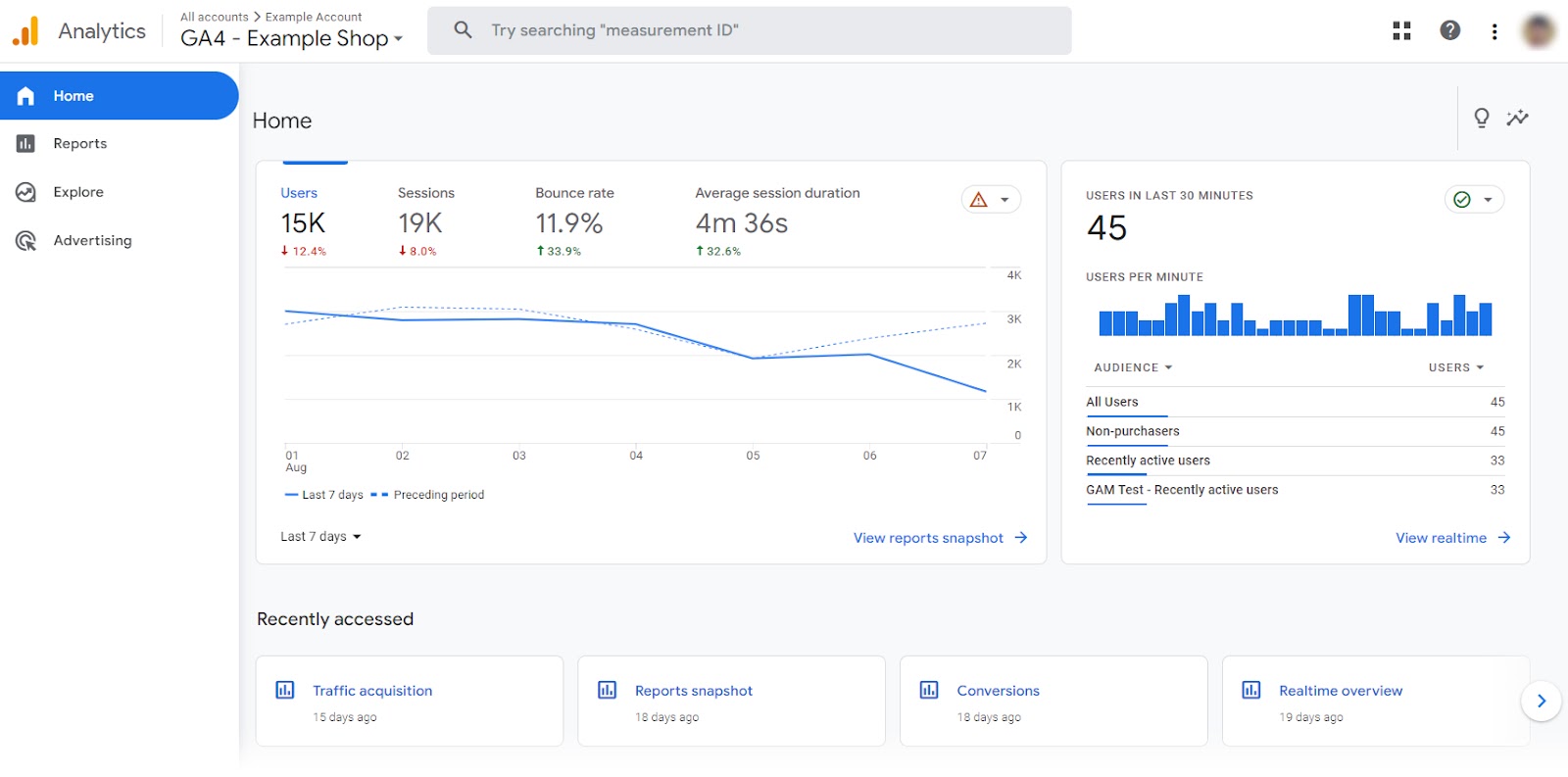
You should be able to find relevant sales metrics, like retention and conversion rates, in your customer relationship management (CRM) system.
Identify what works and what doesn’t. Uncover insights into user behavior and preferences that you can apply to future growth-******* experiments.
6. Refine and Repeat
Based on your analysis, refine your strategy and tweak elements that don’t deliver the desired results. This is the iterative element of growth *******, which we noted above.
Optimization often requires frequent iteration, and you may not see the greatest impact after just one test. But if you continue to optimize each new campaign based on learnings from the previous one, you should see a greater impact over time.
Even as you continue to test and iterate, consider scaling up the most successful tactics to reach a wider audience and achieve more growth.
For example, if one influencer-marketing campaign doubles your followers in one week, you might decide to work with more influencers to amplify the results.
Embrace the experimental nature of growth ******* and be open to new approaches.
This framework provides a structured starting point. But your unique business needs and characteristics will guide the specific path you take to fast and sustainable growth.
6 Growth-******* Techniques for Startups and Small Businesses
While any company can growth ****, startups and small businesses stand to benefit most from this iterative approach to expansion.
Here are six tactics that lend themselves to fast, cost-efficient growth.
1. Influencer Marketing
Influencer marketing is a marketing strategy in which a company works with “influencers” (individuals with substantial or engaged online followings) to promote their products online.
For example, accessories brand Tomtoc uses influencers to advertise its products on Instagram:

In doing so, the company effectively borrows these influencers’ reach and trust, which would otherwise take months or years to build organically.
How does Tomtoc’s own brand reach compare with that of its influencers?
Let’s take a look: A recent post on Tomtoc’s profile received 48 likes.
By comparison, the influencer post above received more than 3,000 likes in a single week. That’s more than 3,000 people who are now aware of Tomtoc and might choose to follow the brand.
Influencer marketing’s growth-******* potential comes down to getting two things right:
- Choosing the right collaborators: Who’s in a related space without being a direct competitor? For instance, a fitness influencer collaborating with a protein shake brand.
- Paying them a commission rather than an upfront fee to minimize risk: Every time they refer someone to your business, they get a percentage of the sale. That way, it doesn’t matter if the campaign isn’t as successful as you’d hoped.
Look for profiles in your industry with highly engaged followings. Lots of likes, comments, and regular posts indicate that a collaboration could be fruitful. This is especially true if you and the influencer share a target audience.
2. Affiliate Marketing
Affiliate marketing is a performance-based promotional tactic by which companies pay a commission on conversions attributed to an affiliate or partner.
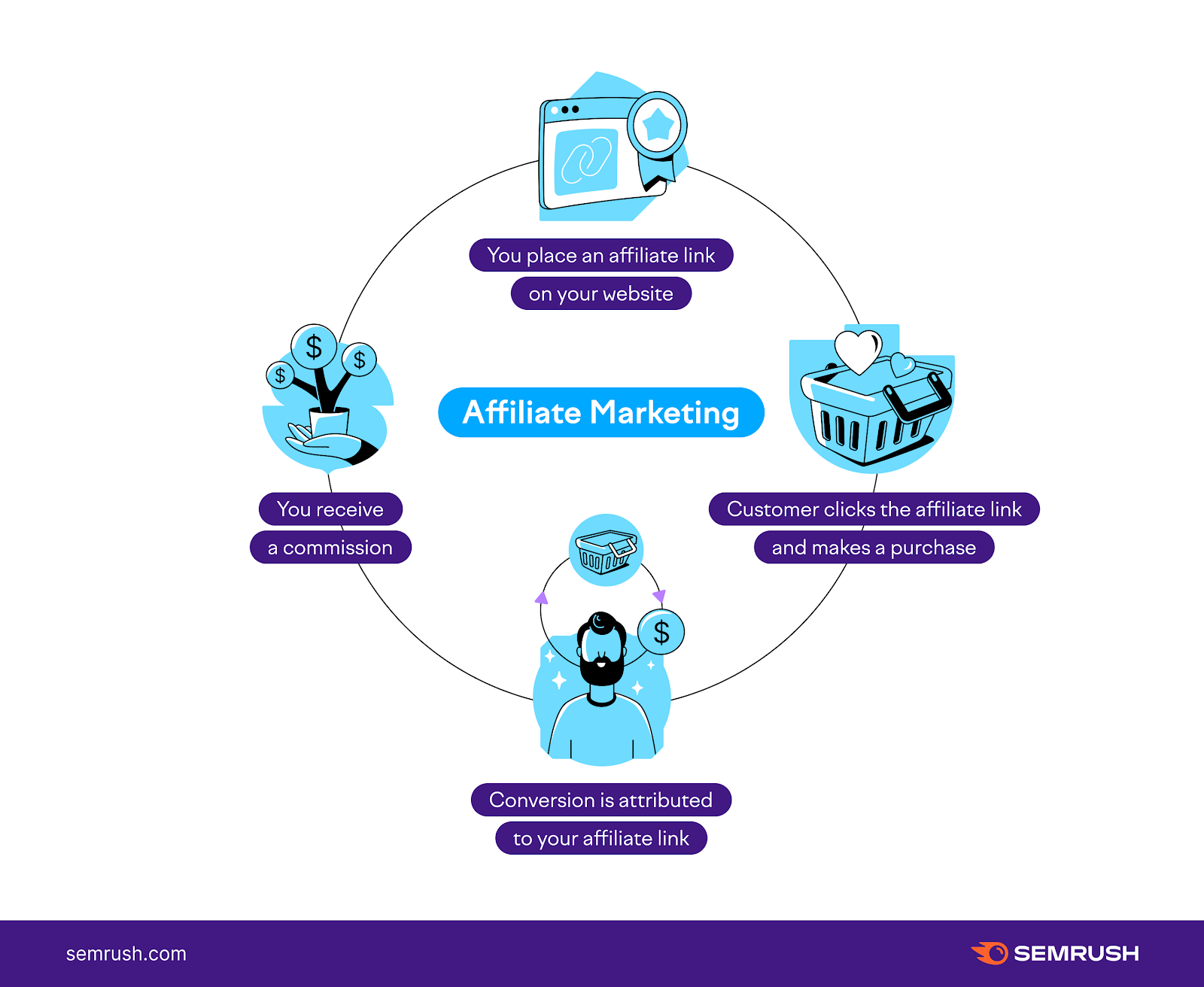
Though affiliate marketing is now a common practice for digital marketers, it began as a classic growth ****. It certainly has the tell-tale signs of one—low risk upfront, but the potential for huge, quick gains.
The more affiliates who share your link, the faster you can grow. It all depends on the audience size of the people/brands you partner with, how well your brands align, and how many of them you work with.
Media sites often include notes about affiliate marketing, like this one from Bicycling magazine:
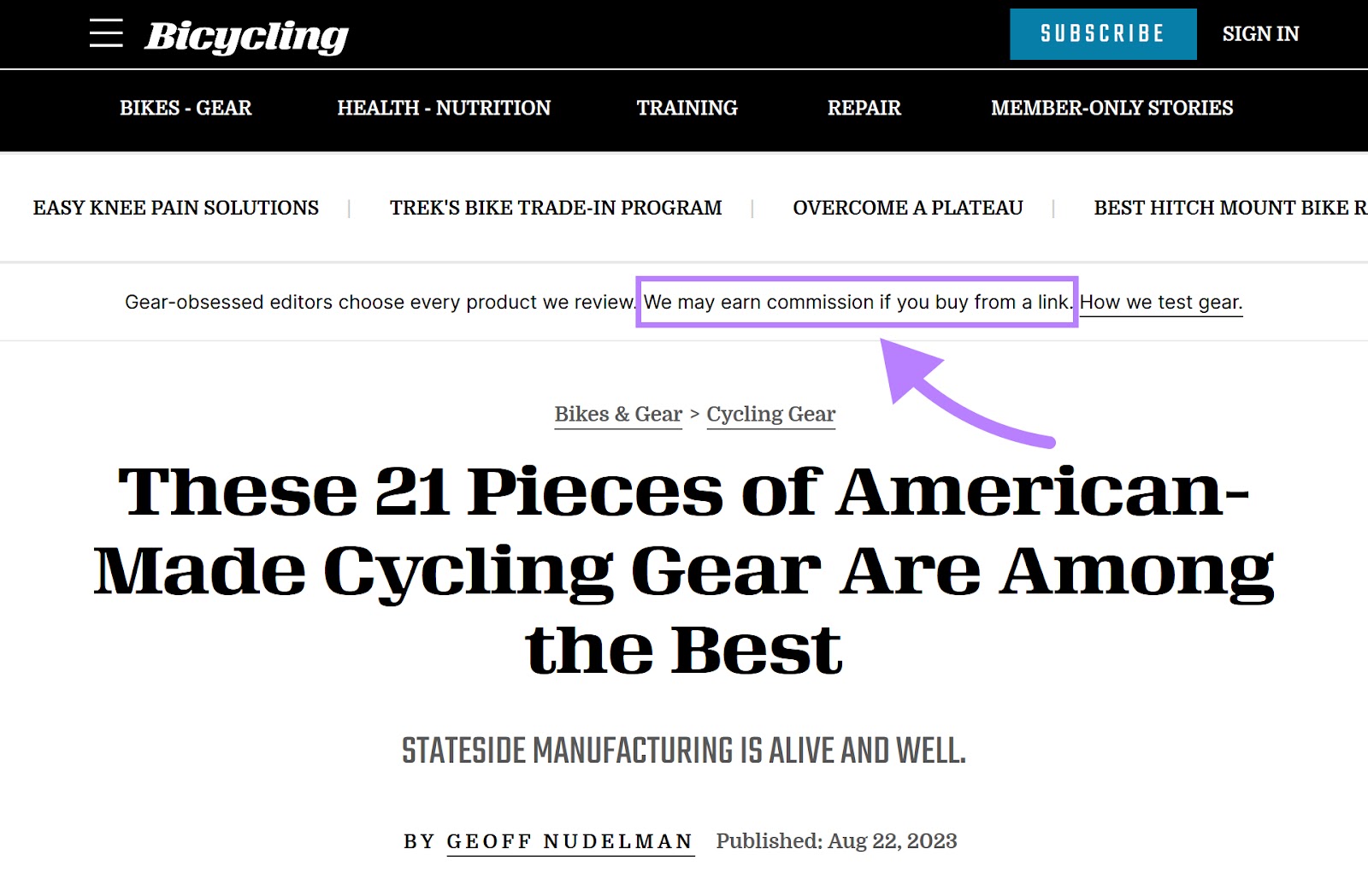
Such a note indicates that third-party businesses (likely the featured items’ manufacturers or resellers) arranged for Bicycling to promote their products.
Much like influencer partnerships, affiliate marketing allows new and developing businesses to borrow the reach and trust of more established companies.
The financial risk is smaller, since the advertiser pays a commission rather than a flat fee. So, you can afford to experiment with different publishers and products to find the best tactic.
3. Referral Schemes
Referral marketing is a strategy that encourages existing customers to refer new ones to a business in exchange for rewards or benefits.
Consider this example from Dropbox:
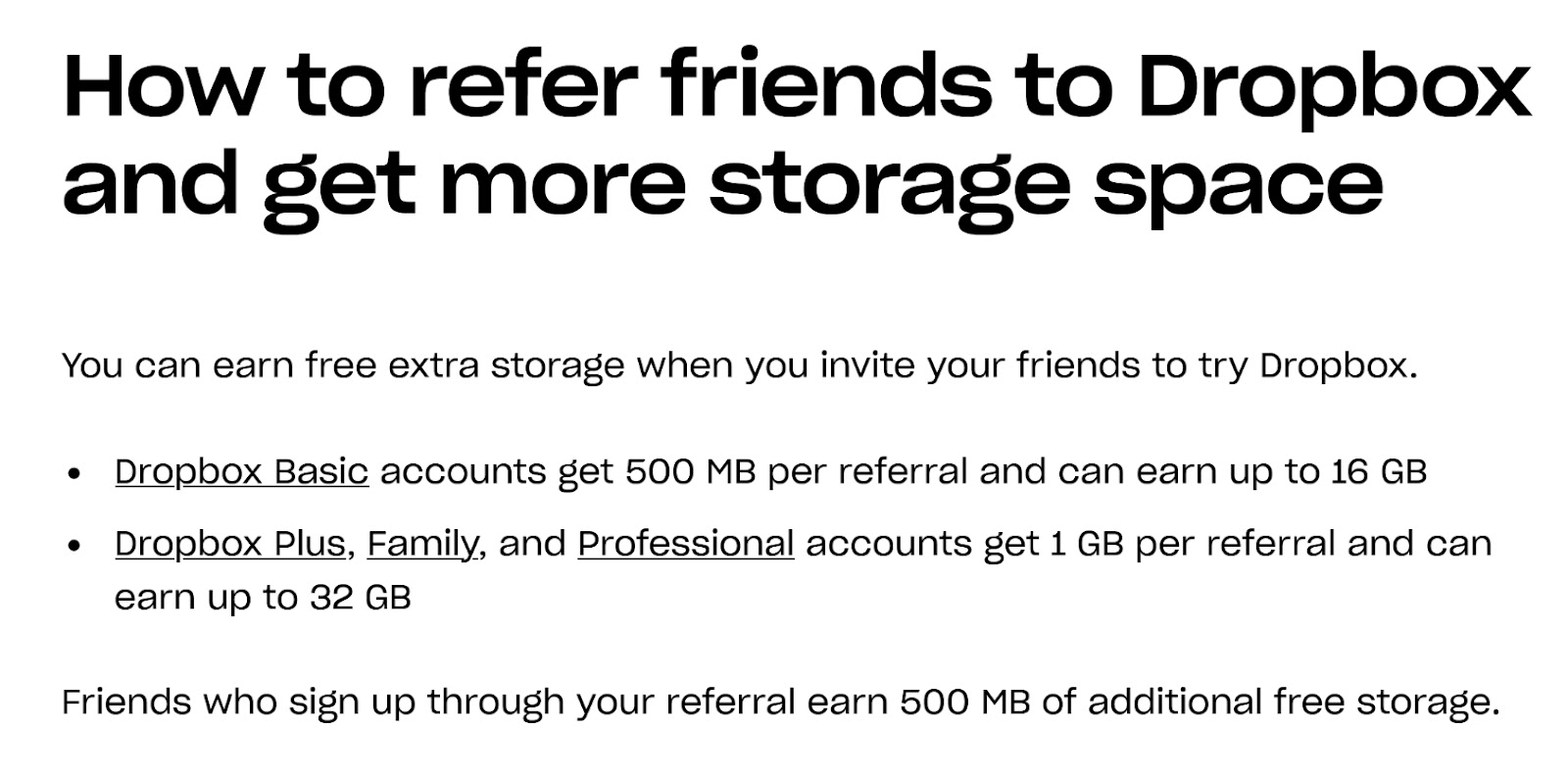
Positive word of mouth makes people more likely to buy. Nielsen reports that 88% of consumers trust personal recommendations more than any other channel.
Referral marketing fits into the growth-******* framework because it allows businesses to leverage a non-monetary asset they already have—their existing customers’ trust—to build brand awareness and grow conversions. The better it works, the more momentum you’ll build.
How do you gain referrals from a small customer base?
You deliver thoughtful, personalized user experiences.
Qualtrics found that consumers who receive what they deem “five-star” experiences are more than three times more likely to recommend a brand to others than those who receive “one star” or “two star” experiences.
So, consistently delivering value to customers encourages people to market your business for you. Now that’s a ****.
4. Countdown Timers
Countdown timers are animated images in an email message or on a website that count down to a specific **** or time.
Sometimes presented in the form of a graphics interchange format (GIF) , they sit alongside other assets, like imagery and text.
Here’s an example that was embedded into an email from Wix:

Countdown timers support fast growth because they add urgency to customer-facing messages. They tell people, “This is your chance!” This can trigger a fear of missing out that’s persuasive to many buyers.
When SaleCycle added timers to the Black Friday emails and on-site messages of six clients, click-through rates (CTRs) increased by an average of 231% and conversions went up 200%.
And when Marcus Taylor added countdowns and a more urgent call-to-action (CTA) to MusicLawContracts.com, he grew conversions by 147%.
You can count down to various events to drive more conversions. Examples include:
- The start or end of a sales promotion
- Physical events and webinars
- Early-bird pricing windows
- Product launches
- Account renewals
Check your web-design tool, content management system (CMS), or email-marketing software for a timer feature. Or, you can use a dedicated tool like MailTimers or MotionMail.
5. Online Advertising
Online advertising can deliver fast, measurable results to help your business grow quickly on a small budget.
It includes paid search, social media ads, display ads, and shopping ads. These channels let you pay to put your business in front of targeted internet users on:
- Search engines
- Social media sites
- Websites
- Apps
Paid search ads such as Google Ads appear at the top and sides of search engine results pages (SERPs) when users search for related terms.
For instance, a recent search of “hockey sticks” on Google yielded four ads before any organic search results.
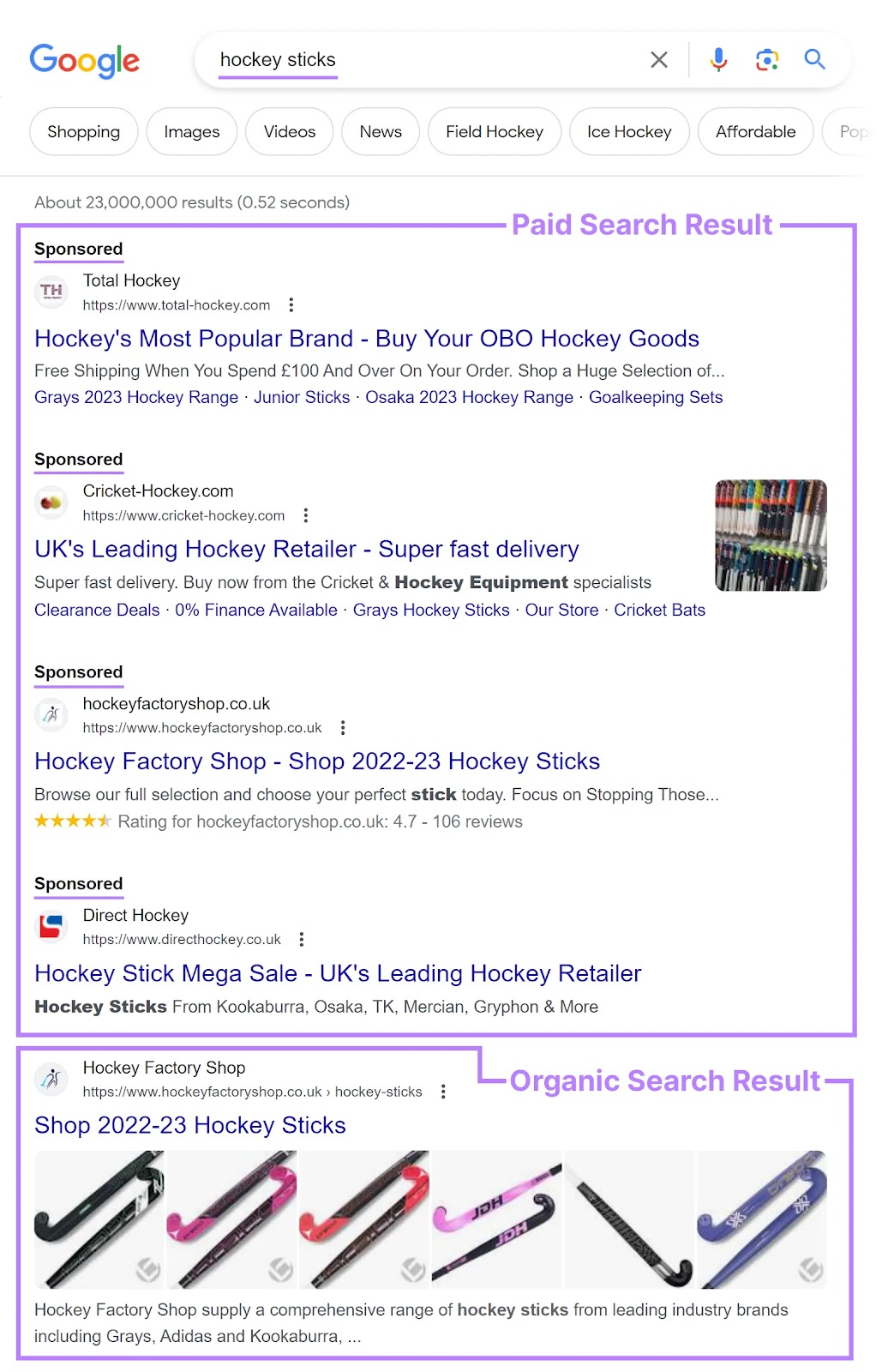
This is also the case on social media, where sponsored and promoted content often appears between organic posts like this one from LinkedIn:

Experiment with different channels and ad copy to learn what works for you. Start small and compare the results before investing more in the most effective tactics.
6. Pre-Launch Schemes
A pre-launch scheme is when a business generates anticipation for a new product, service, or initiative before its official launch.
It involves creating a series of activities and communications to excite a target audience. These messages often use terms like “sneak peek,” “exclusive preview,” and “coming soon.”
Here’s an example from the clothing brand Halfdays:

Pre-launch schemes are a viable growth **** for two reasons:
- They use anticipation and exclusivity to increase customer engagement and acquisition.
- They encompass a wide range of marketing channels and techniques, so there are plenty of variables to experiment with.
Email marketing and online ads are cost-effective ways to build pre-launch anticipation.
How Established Businesses Can Use Growth ******* Techniques
While growth ******* is usually associated with startups or smaller businesses, there’s no reason established or larger businesses can’t use it, too.
Some situations in which an established business might consider growth ******* include:
- Rebranding: When a business rebrands, it often means changing how it does things. This is the perfect time to experiment.
- Redefining its image or audience: If a business wants to shake off negative connotations or attract a younger audience, it may be time to think in more innovative terms.
- Launching a new product: Innovative marketing can really help a new product or service stand out.
For example, the luxury car brand Bentley recently teamed up with TikToker Sabrina Bahsoon (otherwise known as “London’s Tube ****”). Why would a car brand be interested in partnering with someone whose entire schtick involves public transportation? Because it’s an opportunity to introduce their cars to her 660,000+ followers—all while making the brand feel fresher, younger, and more modern.
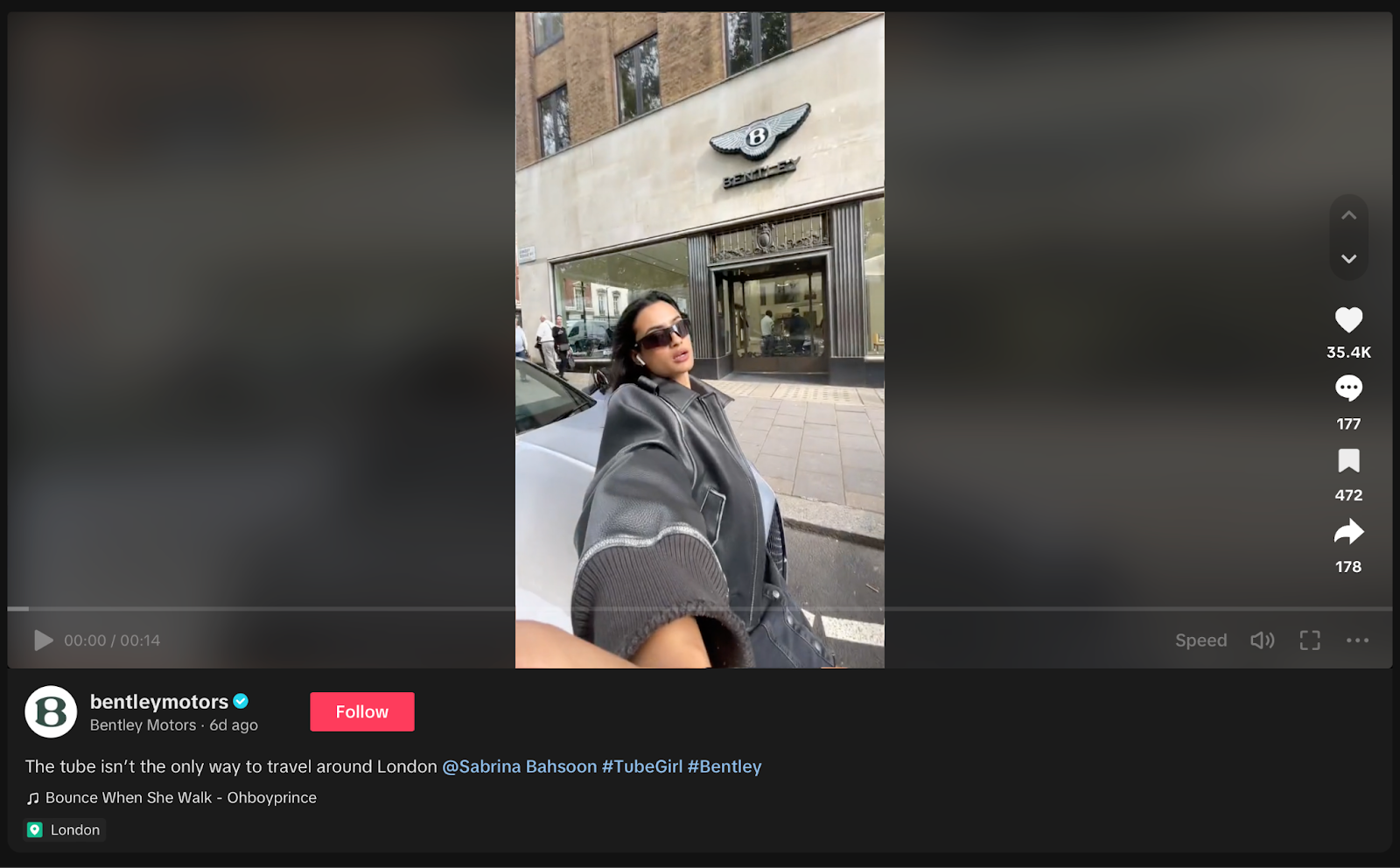
3 Examples of Growth ******* to Spark Your Creativity
Many successful brands used growth ******* to gain momentum early. Here are three growth- ******* case studies for inspiration:
1. Dropbox’s Referral Program
The file-hosting service Dropbox offered users additional storage space in exchange for referring friends:

This simple tactic helped the service grow its customer base from 100,000 users in September 2008 to 4,000,000 in January 2010.
Encouraging existing customers to refer new customers created a viral loop. The result? Dropbox grew quickly without spending big on marketing.
The strategy led to rapid customer acquisition and created a strong community around the product.

The tactic was so successful that Dropbox still use it today:
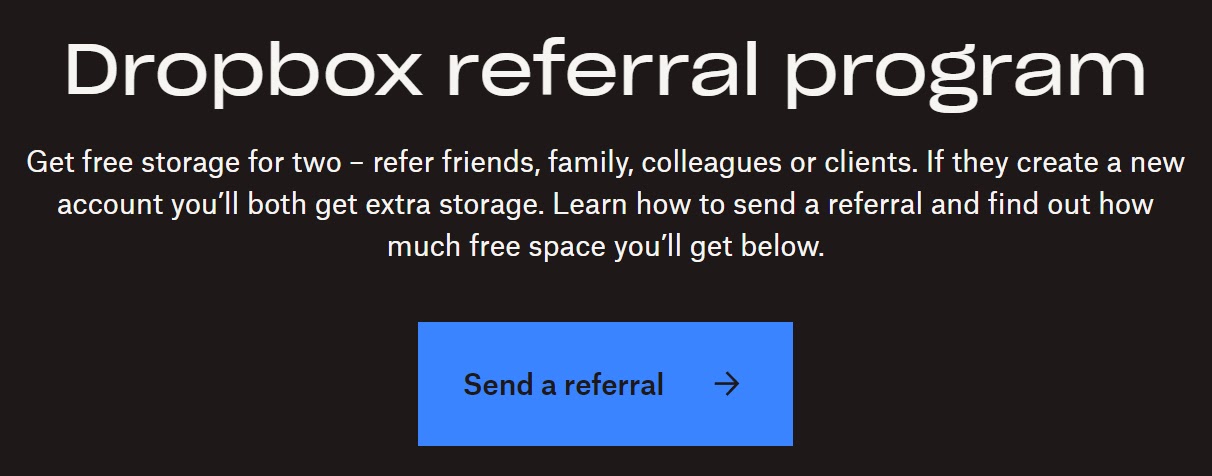
2. Airbnb’s Craigslist Integration
Airbnb relied on a clever integration with Craigslist to accelerate its early growth.
Users who listed properties on Airbnb could cross-post their ads on Craigslist:

The integration helped Airbnb tap into millions of Craigslist’s users, building awareness and driving traffic to its new service.
Airbnb no longer integrates with Craigslist, but partners with many other trusted platforms to get and keep users.
This shows that a growth **** doesn’t have to last forever to be useful. They won’t always be relevant at later stages of a business. But that doesn’t mean they can’t lead to big results.
It’s a prime example of scaling up early growth hacks to achieve long-term marketing goals.
3. Giffgaff’s “Payback” Scheme
UK wireless carrier Giffgaff leverages the power of its community by offering incentives for engagement and referrals.
Users earn “Payback” perks (extra talk time and data) when they share SIM cards:
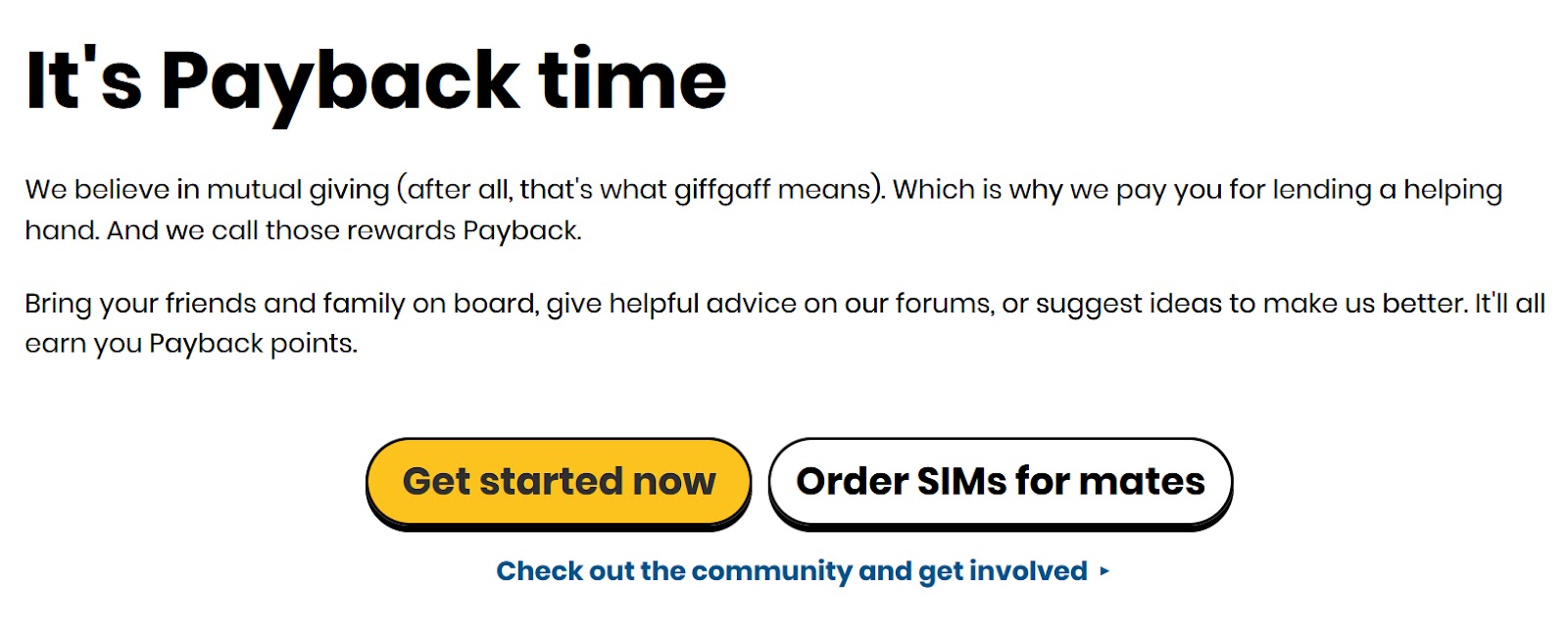
They can also help other customers solve problems via an online forum.
This effective growth-******* strategy turned satisfied customers into active promoters and support agents.
These examples show how innovative thinking—combined with a deep understanding of user behavior—can lead to substantial business growth.
Grow, Maintain, and Measure Your Online Visibility with Semrush
Online visibility is essential to business growth, both rapid and gradual.
Semrush makes that visibility achievable. You can track SEO, content marketing, online ads, social media, and more on a single platform.
Source link : Semrush.com
